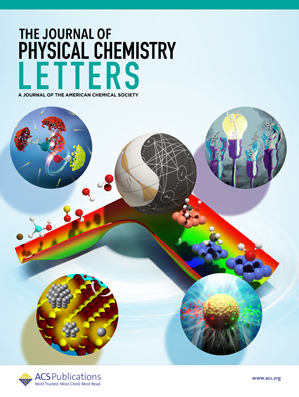Coherent Spin Manipulation in Mononuclear Gadolinium-Substituted Polyoxometalate–Organic Hybrids
IF 4.8
2区 化学
Q2 CHEMISTRY, PHYSICAL
引用次数: 0
Abstract
While most research on molecule-based electron spin qubits has focused on S = 1/2 ions for single-qubit gates, the need for qubit interactions in quantum operations has driven interest in higher-spin molecules and multilevel states. Herein, we study the spin dynamics of two mononuclear gadolinium-substituted polyoxometalate-organic hybrids with the general formula K5[Gd(α-XW11O39)(H2L)]·14H2O (X = Si, Ge; H2L = N,N′-dimethyl-N,N′-bis(2-hydroxy-3-formyl-5-bromobenzyl)ethylenediamine), 1Si-Gd and 1Ge-Gd. Pulsed EPR measurements reveal spin–lattice relaxation (T1) and quantum coherence (Tm) times of up to 2315 and 2.6 μs at 3 K, respectively, for diamagnetically diluted samples, as well as Rabi oscillations up to 20 K. The obtained results make 1Si-Gd and 1Ge-Gd two of the few Gd-based complexes displaying such behavior, highlighting the challenge of coherently manipulating the spin states of Gd. Moreover, their hybrid organic–inorganic nature endows them with chemical robustness and solution stability, essential prerequisites for surface immobilization and future integration in practical devices.

求助全文
约1分钟内获得全文
求助全文
来源期刊

The Journal of Physical Chemistry Letters
CHEMISTRY, PHYSICAL-NANOSCIENCE & NANOTECHNOLOGY
CiteScore
9.60
自引率
7.00%
发文量
1519
审稿时长
1.6 months
期刊介绍:
The Journal of Physical Chemistry (JPC) Letters is devoted to reporting new and original experimental and theoretical basic research of interest to physical chemists, biophysical chemists, chemical physicists, physicists, material scientists, and engineers. An important criterion for acceptance is that the paper reports a significant scientific advance and/or physical insight such that rapid publication is essential. Two issues of JPC Letters are published each month.
 求助内容:
求助内容: 应助结果提醒方式:
应助结果提醒方式:


